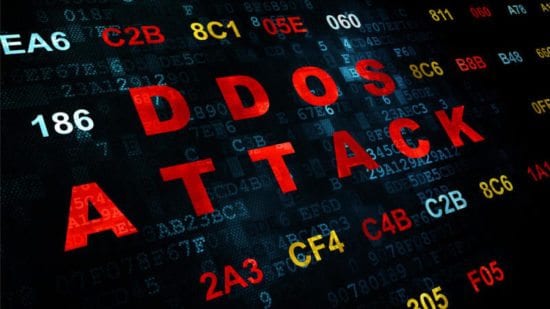STERLING, Va. – Neustar, Inc. (NYSE: NSR), a trusted, neutral provider of real-time information services, today released the findings from its fourth annual Worldwide DDoS Attacks and Cyber Insights Research Report. The report documents the frequency and cost of attacks and what measures are being taken to counter these threats.
The Neustar May 2017 Worldwide DDoS Attacks and Cyber Insights Research Report, a 52-page global report, analyzes the responses of more than one thousand CISOs, CSO, CTOs security directors and managers. The report also includes, for the first time, Q1 attack data and trends captured from the Neustar DDoS Security Operations Center.
“Distributed Denial of Service (DDoS) attacks are the zeitgeist of today’s Internet,” said Barrett Lyon, pioneer of the DDoS defense industry and Head of Research and Development at Neustar Security Solutions. “The question organizations must ask now is how they are prepared to manage these highly disruptive events. Are they prepared for the bad day where their customers call and ask why the website is down?”
Highlights from Neustar’s May 2017 Worldwide DDoS Attacks and Cyber Insights Research Report include:
DDoS Attack Trends
- Volumetric attacks getting larger – 45 percent of DDoS attacks were more than 10 gigabits per second (Gbps); and, 15 percent of attacks were at least 50 Gbps, almost double the number reported last year.
- Nowhere to hide – 849 out of 1,010 organizations were attacked with no particular industry spared, an increase of 15 percent since 2016. 727 – 86% of those attacked – were hit more than once.
- Customers take on DDoS monitoring– 40 percent of respondents reported receiving attack alerts from customers, up from 29 percent in 2016.
Business Implication Trends
- It’s a game of risk– 43 percent of organizations report average revenue loss of at least $250,000 per hour, with 51 percent taking at least three hours to detect an attack and 40 percent taking at least three hours to respond.
- It’s a race against crime, rise in Ransomware – The instances of ransomware reported in concert with DDoS attacks increased 53 percent since 2016. 51 percent of attacks involved some sort of loss or theft with a 38 percent increase year over year in customer data, financial and intellectual property thefts.
- What’s in place is not enough – 99 percent of organizations have some sort of DDoS protection in place, yet 90 percent of organizations are investing more than they did a year ago and 36 percent think they should be investing even more.
Neustar and Harris Interactive conducted global, independent research of 1,010 directors, managers, CISOs, CSOs, CTOs, and other c-suite executives to find out how DDoS attacks affect their organizations and what measures are in place to counter these threats. The respondents span many industries, including technology, financial services, retail, healthcare and energy. Nearly half of the organizations reported annual revenues from $500M to $1B per year.
Although Q4 is generally considered “DDoS season”, the Neustar Q1 attack data captured from the Neustar DDoS Security Operations Center highlights a number of key indicators that foreshadow this year will be another challenging one from a DDoS threat landscape perspective.
- The year is off to a fast start– Q1 is generally considered “pre-season,” but Neustar is already seeing significant increases in average attack size and variety of attack vectors.
- Emergence of new attack vectors– Attackers are constantly seeking new ways to turn legitimate infrastructure elements against their owners. Generic Routing Encapsulation (GRE) based flood attacks and Connectionless Lightweight Directory Access Protocol (CLDAP) reflection attacks are emerging as the new hot attack trends for 2017.
- Attacks continue to get more complex– Multi-vector attacks have become the nearly universal experience for Neustar mitigation operations, demonstrating that attackers continue to launch more sophisticated attacks to penetrate organizations defenses.
Industry Leader Neustar Completes First Phase of Upgrade to 10 Tbps Global DDoS Mitigation Capacity
In conjunction with today’s release, Neustar announces it has tripled its global DDoS mitigation network capacity to 3 Tbps and will continue to significantly increase to 10 Tbps by early 2018. The construction, implementation and capacity of this new network is designed to stay ahead of the changing threat landscape and neutralize new and future volumetric DDoS attacks, as well as easily containing other types of DDoS attack vectors using proprietary DNS and IP intelligence data.
“The focus, dedication, innovation and expertise demonstrated by the team at Neustar is unparalleled when it comes to protecting our critical infrastructure,” said Fritz Seifts, VP of Core Infrastructure, MLB Advanced Media. “We are excited to have Neustar as a Technology Partner and to be protected by their leading edge DDoS protection and secure DNS services.”
“Innovation is in our DNA at Neustar, and we are pushing the limits of what was already considered a standard. We’re going well beyond any of our competitors or visions I had 20 years ago,” said Lyon. “With the completion of our new global constellation of scrubbing centers, we will have the largest, most distributed, and technically advanced DDoS defense network on the planet. We will not only be defending our large enterprise clients but also handling the overflow traffic many other providers will have during large attacks.”
Download Neustar’s Worldwide DDoS Attacks and Cyber Insights Research Report at ddosdefense.neustar.
Learn more about Neustar SiteProtect.
[su_box title=”About Neustar” style=”noise” box_color=”#336588″][short_info id=’101831′ desc=”true” all=”false”][/su_box]
The opinions expressed in this post belongs to the individual contributors and do not necessarily reflect the views of Information Security Buzz.



